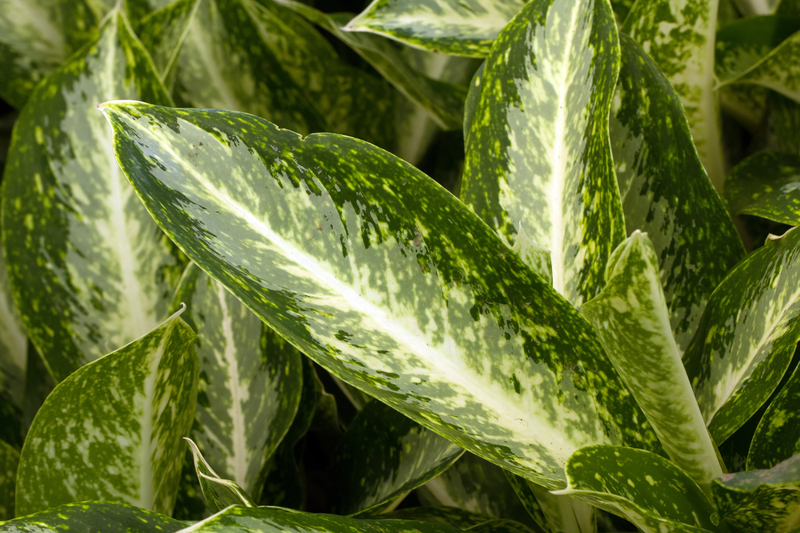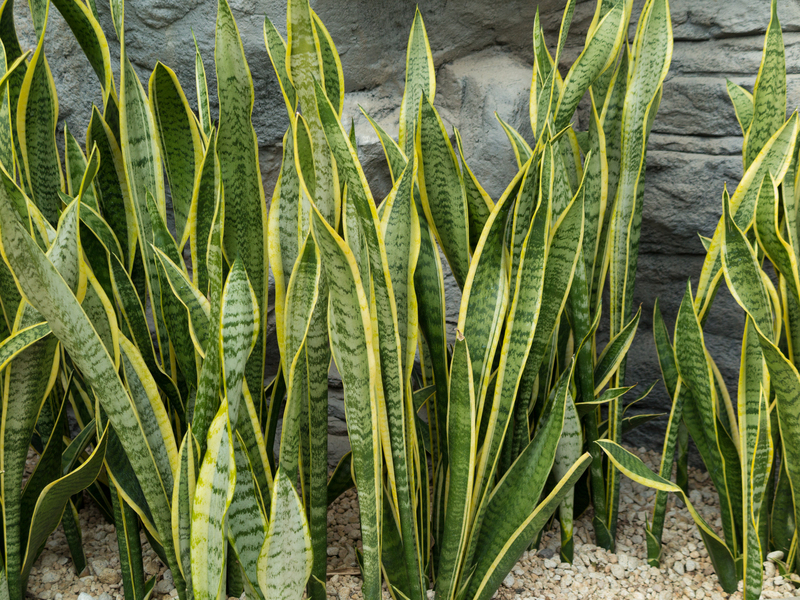An in-depth look at container gardening
Posted on 24/06/2025
Container gardening brings the joy of horticulture to everyone regardless of space, experience, or climate. Whether you live in a high-rise apartment, a house with limited yard space, or simply want to add plants to your patio, container gardening offers endless possibilities. In this comprehensive guide, we'll take an in-depth look at container gardening, exploring its benefits, planning tips, plant selection, best practices, and expert advice for success. Let's dive into this flourishing trend and discover how you can create your own lush oasis--one pot at a time!
What is Container Gardening?
Container gardening refers to the practice of growing plants in pots, planters, or other containers instead of directly in the ground. This versatile approach allows you to cultivate vegetables, herbs, flowers, shrubs, and even small trees in almost any location. In cities, balconies and rooftops are transformed into blooming retreats, while suburban decks and porches burst with color and foliage. Container gardening is both art and science, balancing creativity with plant care know-how.
Main Advantages of Container Gardening
- Flexibility: Move your containers to optimize sunlight, avoid harsh weather, or reorganize for aesthetics.
- Space Efficiency: Maximize small areas such as balconies, patios, or window sills.
- Soil Control: Customize the soil mix for each plant, avoiding problems like poor ground soil or difficult terrain.
- Pest and Disease Management: Isolate plants to prevent diseases from spreading, and easily treat affected areas.
- Season Extension: Move plants indoors during colder months or start growing earlier in the year.
- Style and Design: Use colorful containers and creative arrangements for a unique garden look.

Planning Your Container Garden
Assess Your Space and Resources
Before you start collecting pots and plants, take a careful look at your available space. Consider:
- Sunlight exposure: Track how much sun different areas receive throughout the day.
- Accessibility: Make sure you can reach your containers for watering, pruning, and harvesting.
- Wind protection: High balconies or exposed decks may require sturdier pots and shelter for delicate plants.
- Weight considerations: Balconies and rooftops may have weight limits--lightweight pots or vertical gardening can help.
Choosing the Perfect Containers
The type of container you use directly impacts watering needs, root growth, and plant health. Here's what to consider:
Popular Container Materials:
- Terracotta: Attractive and traditional but porous, causing faster moisture loss. Best for dry-loving plants.
- Plastic: Lightweight and retains water well; ideal for large or rooftop gardens.
- Ceramic/Glazed: Decorative and available in many styles but may break in freezing conditions.
- Metal: Modern and sturdy; can get hot in summer, which might "cook" roots.
- Wood: Natural look and good insulation but may rot if not treated.
Other key container considerations:
- Drainage: Ensure all containers have drainage holes to prevent root rot.
- Size: Select a pot size that suits the plant's root system and final growth dimensions.
- Shape: Tall pots are best for deep-rooted plants, while wide, shallow ones suit surface-rooting specimens.
Selecting Soil and Amendments for Container Gardens
For successful container planting, avoid using regular garden soil. Instead, opt for:
- Potting Mix: Specially formulated to hold moisture, provide nutrients, and drain well.
- Additional amendments:
- Perlite or vermiculite: Increase drainage and aeration.
- Compost: Boosts organic matter and slow-release nutrients.
- Coconut coir: Retains moisture in lightweight mixes.
For container gardening, a soil blend of one part potting soil, one part compost, and one part perlite or vermiculite is often ideal for most plants.
Choosing Plants: What Thrives in Containers?
The beauty of container gardening is its versatility--almost any plant can flourish in a container with the proper conditions. Here are top choices for various needs:
Best Edibles for Container Gardening
- Herbs: Basil, parsley, chives, mint (*in its own pot!*), oregano, thyme
- Leafy greens: Lettuce, spinach, arugula, kale, Swiss chard
- Vegetables: Tomatoes (especially cherry or dwarf varieties), peppers, beans, radishes, carrots, cucumbers (look for bush or patio cultivars)
- Fruits: Strawberries, blueberries (ericaceous compost), dwarf citrus trees
Best Flowers for Container Gardening
- Annuals: Petunias, marigolds, impatiens, pansies, snapdragons, nasturtiums
- Perennials: Lavender, coreopsis, salvia, hosta (*best for shady spots*), sedum
- Bulbs: Tulips, daffodils, hyacinths, crocus
Unique and Decorative Options
- Ornamental grasses
- Succulents and cacti (*excellent for beginners and dry climates*)
- Bonsai and dwarf trees
- Trailing plants such as ivy, sweet potato vine, or creeping Jenny for cascading effects
Designing Your Container Garden
For visual impact and healthy growth, group plants with compatible needs. Use the classic "thriller, filler, spiller" formula:
- Thriller: Upright centerpiece plant for height and drama (e.g., dracaena, ornamental grass).
- Filler: Mounding or bushy plants that fill in around the thriller (e.g., petunias, parsley).
- Spiller: Trailing or cascading plants that spill over the container's edge (e.g., sweet potato vine, ivy).
Pro tip: Select a color palette that complements your home or outdoor decor. Don't be afraid to mix grasses, flowers, and edibles for truly unique container garden ideas!
Maintaining Your Container Garden: Tips for Success
Watering Techniques and Irrigation
Because containers dry out quickly, regular watering is vital. Here's how to keep your plants hydrated without overwatering:
- Check soil moisture daily with your finger--water when the top inch feels dry.
- Water thoroughly so liquid drains out the bottom, ensuring all roots are reached.
- Consider self-watering pots or drip irrigation for vacations or busy schedules.
- In hot weather, most containers need watering once or even twice a day.
**Remember:** Overwatering can cause root rot. Always empty excess water from saucers and use well-draining potting mixes.
Fertilizing Container Plants
Unlike in-ground beds, nutrients in pots get depleted faster. For successful container gardening:
- Mix slow-release fertilizer into your potting soil before planting.
- Feed every 2-4 weeks with a liquid fertilizer tailored to your plant type (vegetable, flowering, etc.).
- Use organic compost tea or fish emulsion for a natural nutrient boost.
Pest and Disease Management
Container plants are less prone to many soil-borne diseases, but you still need to stay vigilant:
- Inspect leaves regularly for signs of pests like aphids, whiteflies, or spider mites.
- Remove dead or diseased foliage promptly to prevent problems from spreading.
- Clean and disinfect containers between uses if you encounter persistent issues.
- Use organic pest control methods like neem oil or insecticidal soap before resorting to chemicals.
Seasonal Considerations and Year-Round Interest
Spring and Summer Containers
Spring and summer are prime growing seasons. Start seeds indoors or buy young plants, then experiment with colorful arrangements that thrive in your local climate.
Fall and Winter Container Gardening
- Swap summer annuals for cold-hardy choices like ornamental kale, pansies, and evergreen herbs.
- Wrap pots with burlap or bubble wrap to insulate roots during chilly months.
- Move non-hardy containers indoors or to protected locations before your first frost.
- Try "holiday pots" with conifers and winterberry for winter decoration.
Creative Container Gardening Ideas
- Vertical container gardens: Use wall planters or stacked containers to utilize vertical space.
- Hanging baskets: Perfect for trailing plants and colorful flowers on balconies or porches.
- Upcycled containers: Repurpose old buckets, tins, or even boots for quirky garden accents.
- Herb gardens in kitchen windows: Enjoy fresh herbs year-round within arm's reach.
- Living screens: Arrange tall pots with climbers like beans or clematis to serve as privacy dividers.
Common Challenges and Solutions in Container Gardening
- Root Bound Plants: When roots circle a pot and outgrow the space, gently loosen before replanting in a larger container.
- Leggy Growth: Often caused by inadequate light--move your pots to sunnier areas or supplement with grow lights.
- Wilting: Can result from both overwatering and underwatering--check soil moisture and adjust accordingly.
- Nutrient Deficiencies: Yellowing leaves may indicate a need for more fertilizer or fresh potting mix.
- Salt Build-Up: Flush pots occasionally with water to wash away excess fertilizer salts.
The Environmental Benefits of Container Gardening
- Urban biodiversity: Provides food and shelter for pollinators and beneficial insects, especially in city environments.
- Water conservation: Containers are easier to target with efficient watering methods than large garden beds.
- Reduction in food miles: Growing your own vegetables and herbs reduces reliance on store-bought items shipped from afar.
- Green aesthetic: Even small container gardens help cool urban spaces and improve air quality.

Getting Started: A Step-by-Step Guide to Container Gardening
- Pick your spot: Assess sun, wind, and available space.
- Gather containers: Choose ones with drainage and appropriate size for your plants.
- Fill with quality potting mix: Add amendments as needed.
- Plant your selections: Arrange for best visual appeal and plant health.
- Water well: Soak thoroughly after planting and monitor moisture daily.
- Fertilize as needed: Apply slow-release or regular liquid feeds.
- Monitor for pests and diseases: Intervene early for best results.
- Rotate and refresh: Change seasonal displays and repot as plants grow.
Conclusion: Growing Success with Container Gardening
Taking an in-depth look at container gardening reveals its vast potential for gardeners of all skill levels. Whether your goal is to grow delicious herbs, stunning flowers, or unique combinations in upcycled pots, the flexibility of container gardening cannot be overstated.
With a little planning, the right tools, and ongoing care, you'll cultivate not just beautiful plants, but also a sense of accomplishment and tranquility--no matter how small your space. So embrace the creativity, experiment with your arrangements, and let the world of container gardening bring greenery and joy to your doorstep. Happy gardening!



